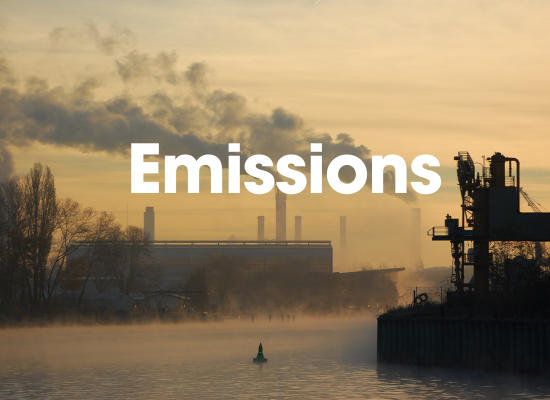The Evolution of Ship Engines Under Tighter Emission Standards

The maritime industry, responsible for transporting over 80% of global trade by volume, also plays a significant role in environmental emissions. In response, stringent emission regulations have been established to mitigate this impact. Key among these is the International Maritime Organization’s (IMO) 2020 sulfur cap, which restricts sulfur content in ship fuel oil to 0.50% m/m (mass by mass). This regulation aims to significantly reduce the amount of sulfur oxides emanating from ships, benefiting both the environment and public health.
Importance of Compliance
Adhering to emission standards is crucial not just for legal compliance but for the sustainability of the maritime sector itself. Compliance drives innovation by necessitating the development of cleaner engine technologies and alternative fuels, positioning the industry as a leader in environmental stewardship while ensuring its economic viability.
Historical Context and Evolution of Emission Standards
Beginnings of Emission Control
The path to current maritime emission standards started with the International Convention for the Prevention of Pollution from Ships (MARPOL), initially adopted in 1973 and amended in 1978. This convention was pivotal in setting international norms to control operational and accidental pollution from ships.
Key Milestones in Emission Regulations
Significant amendments and milestones have shaped the regulatory landscape over the years:
- MARPOL Annex VI: Established in 1997 and enforced from 2005, it specifically targets the reduction of air pollution from ships.
- Reduction of Sulfur Oxides (SOx): Progressive tightening of SOx emissions has been a major focus, with critical reductions implemented over several phases.
- Nitrogen Oxides (NOx) Control: The introduction of NOx Emission Control Areas (NECAs) to curb NOx emissions from ships.
- Energy Efficiency Measures: The implementation of the Energy Efficiency Design Index (EEDI) for new ships encourages more energy-efficient and environmentally friendly designs.
Current Emission Regulations and Their Impact
Detailed Examination of Current Emission Regulations
IMO 2020
The International Maritime Organization (IMO) implemented a significant regulation in 2020, known as the “IMO 2020,” which mandates that all shipping companies reduce the sulfur content in their ship fuel to no more than 0.50% m/m globally. This regulation marks a drastic reduction from the previous limit of 3.50% m/m, aiming to decrease the amount of sulfur oxides produced by ships. Sulfur oxides are known contributors to environmental issues like acid rain and can cause severe respiratory problems in humans.
MARPOL Annex VI
MARPOL Annex VI, which is part of the broader MARPOL regulations, focuses on limiting air pollution from ocean-going ships. It sets limits on nitrogen oxides (NOx) and sulfur oxides (SOx) emissions and mandates the use of energy efficiency measures for new and existing ships. The regulation also includes provisions for the establishment of Emission Control Areas (ECAs), where stricter emission standards apply, significantly reducing allowable emissions near coastal areas with higher population densities.
Impact on Ship Operation and Fuel Usage
Operational Adjustments
To comply with these stringent regulations, ship operators have had to make substantial operational adjustments. These include retrofitting existing vessels with sulfur scrubbers, which allow the use of higher-sulfur fuel while still adhering to emission standards, or switching to low-sulfur fuel options. Both strategies entail significant investment and logistical planning, impacting the overall operational costs and strategies of shipping companies.
Fuel Usage Changes
The shift in fuel usage is one of the most direct impacts of the new emission standards. Ships are increasingly using low-sulfur fuel oils or alternative fuels such as liquefied natural gas (LNG) to meet the sulfur cap requirements. This transition not only affects the supply and demand dynamics of different types of marine fuels but also has implications for global oil markets. Additionally, the use of alternative fuels like LNG poses new challenges and opportunities, requiring changes in fueling infrastructure and ship design to accommodate these cleaner energy sources.
Technological Advances in Ship Engine Designs
Innovations Aimed at Reducing Emissions
Scrubber Systems
One of the primary technological innovations in the maritime industry has been the adoption of exhaust gas cleaning systems, commonly known as scrubbers. These systems allow ships to continue using higher sulfur fuel by cleaning emissions before they are released into the atmosphere. Scrubbers work by spraying alkaline water into the ship’s exhaust, which neutralizes sulfur oxides, turning them into harmless salts and water. This technology has been pivotal for ships not yet ready to transition to cleaner fuels, providing a compliance solution that meets emission regulations while minimizing disruptions to existing fuel supply chains.
LNG-Powered Engines
Another significant advancement is the use of liquefied natural gas (LNG) as a ship fuel. LNG-powered engines emit significantly lower levels of SOx, NOx, and particulate matter compared to traditional heavy fuel oil or marine diesel engines. Additionally, LNG can reduce carbon dioxide emissions, helping address not only regulatory compliance but also broader environmental impact concerns. The adoption of LNG engines has been encouraged by both environmental regulations and the potential for long-term cost savings, despite initial higher investment costs and infrastructure changes.
Role of Hybrid and Electric Propulsion Systems
Hybrid Propulsion Systems
Hybrid propulsion systems in ships combine traditional internal combustion engines with electric motors, allowing for more flexible and efficient energy use. These systems typically operate with both a conventional fuel, like diesel, and an electric battery. The electric power can be used for low-speed operation or when docking, significantly reducing emissions in sensitive coastal and port areas. During high-power demand, the ship can switch back to conventional engines, ensuring operational efficiency without sacrificing performance.
Electric Propulsion Systems
Fully electric propulsion systems represent the cutting edge of maritime technology, primarily used in smaller vessels and ferries operating over short distances. These ships are powered entirely by batteries, producing zero emissions during operation. The challenge with electric propulsion lies in the battery technology, which must balance energy capacity, weight, and recharge times to be viable for larger ships or longer routes. However, ongoing advancements in battery technology continue to expand the potential for electric propulsion in the maritime sector.
Challenges and Limitations
Technical and Financial Challenges
Technical Challenges
Adopting new engine technologies and complying with stringent emission regulations pose significant technical challenges for the maritime industry. For instance, integrating scrubber systems or retrofitting ships with LNG engines requires substantial modifications to existing vessels, which can be complex and time-consuming. Additionally, managing the logistics of new fuel types, such as ensuring the availability of LNG at global ports, continues to be a major hurdle.
Financial Challenges
The financial implications of adopting new technologies are profound. Initial investments for technologies like scrubbers or LNG-powered engines are considerable, with costs running into the millions for each vessel. The uncertainty regarding the future of certain technologies and fuel types also makes investment decisions risky. Smaller shipping companies, in particular, may find these costs prohibitive, potentially leading to a competitive disadvantage in a market increasingly dominated by larger players who can afford such transitions.
Limitations of Current Technologies
Current technologies, despite their advancements, still face limitations in fully meeting emission standards. Scrubbers, for example, handle sulfur emissions but do not address nitrogen oxides or CO2 emissions. Similarly, while LNG reduces SOx and NOx emissions, it is primarily methane—a potent greenhouse gas—which raises concerns about methane leakage. These limitations highlight the need for continued innovation and development of more comprehensive solutions within the industry.
The Future Outlook
Predictions for Future Trends in Engine Design and Technology
As the maritime industry continues to evolve, future trends in engine design and technology are likely to focus on even greater efficiency and lower emissions. Technologies such as hydrogen fuel cells, advanced battery systems for fully electric propulsion, and biofuel-compatible engines are expected to gain traction. The development of ‘smart’ ship technologies, which optimize fuel use and route planning through AI and data analytics, is also anticipated to play a significant role in reducing emissions and increasing efficiency.
Potential Changes in Regulations
Regulatory landscapes are expected to tighten further, with possible introductions of more stringent CO2 emission targets and expanded regulations covering a broader range of pollutants. These changes will not only push the maritime industry towards more sustainable practices but also encourage the adoption of next-generation technologies. Additionally, as international focus on climate change intensifies, regulations may also begin to address lifecycle emissions and the use of renewable energy sources in production and operations, reshaping industry standards and operational norms.
The future of maritime engine technology and design is set against a backdrop of increasing environmental awareness and regulatory pressure, pointing towards a more innovative and sustainable maritime industry. This evolution will likely spur further technological breakthroughs and strategic shifts in how the industry addresses its environmental impact.
Additional References
- MARPOL Annex VI – For detailed regulations regarding the prevention of air pollution from ships. MARPOL Annex VI Info
- The International Council on Clean Transportation (ICCT) – Offers reports and analyses on maritime emissions and the effectiveness of current technologies and regulations. ICCT Maritime Emissions
- Lloyd’s List – Provides news and insights specific to the shipping industry, including topics on ship technology and environmental regulations. Lloyd’s List
- Marine Insight – An informational portal that provides articles on various aspects of maritime technology, including engine design changes due to emission regulations. Marine Insight
- Bureau Veritas – Offers various resources on shipping and marine regulations, including insights into how emission standards affect ship operations. Bureau Veritas Marine & Offshore
- DNV GL – They provide extensive research and reports on the future of maritime technology and the impact of environmental regulations. DNV GL Maritime
- Journal of Marine Science and Engineering – A peer-reviewed journal that publishes research on marine engineering, including topics on emissions and propulsion technologies. JMSE
- ScienceDirect – A platform for scientific research that offers papers on the latest technologies in marine engine designs and emission reduction. ScienceDirect

Do you have a Maritime Product or Service that may be of interest to Shipowners? Tell us about it here!
Do you have feedback or insights? Please reach out to editor @ shipuniverse.com



